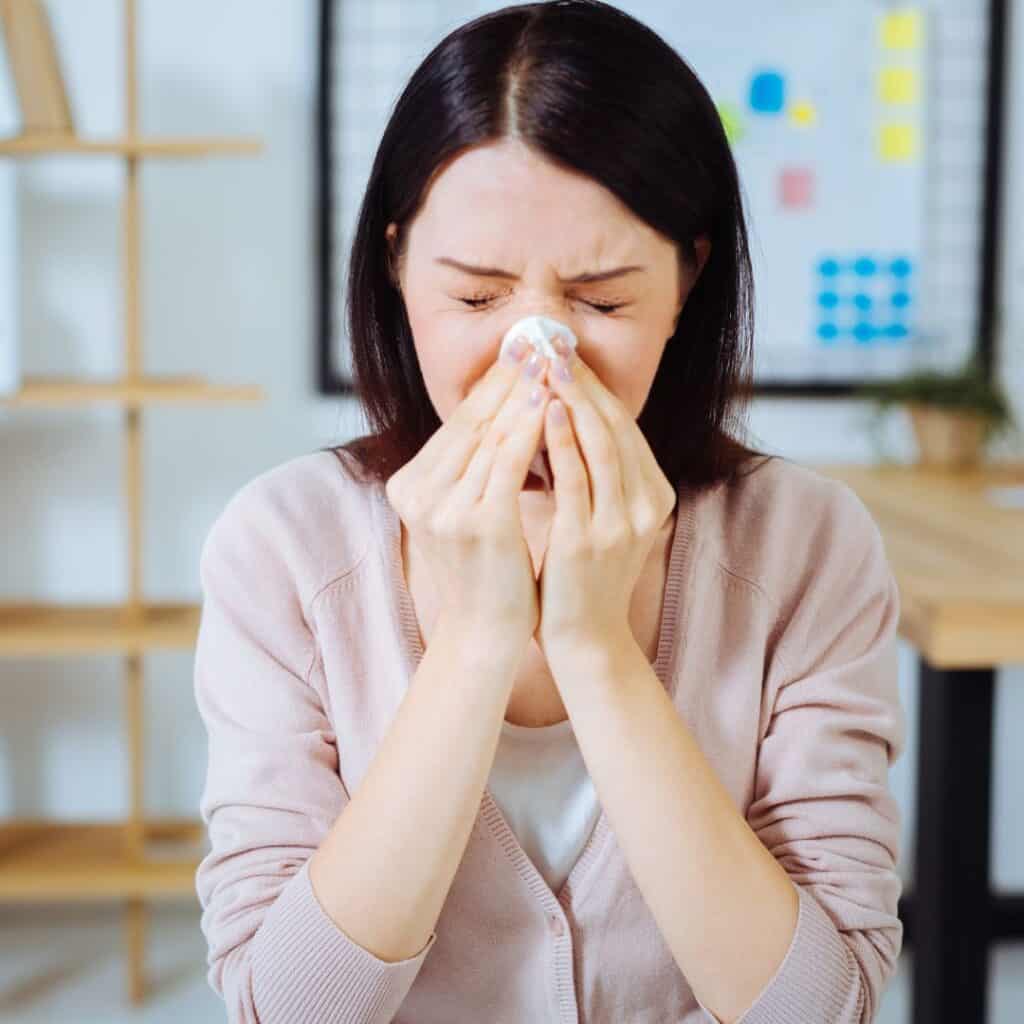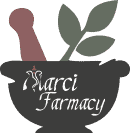
What is Histamine Intolerance?
Have you heard about histamine intolerance and wondered what the heck it was? If you have it or even what symptoms to look for and how do you manage it?
Well, I break it all down for you here.
First off, what does histamine do and what is the purpose of histamine:
- Histamine dilates the blood vessels and initiates the inflammatory response, after injury or allergic reaction as part of immune response, which brings immune cells to the site of the bite such as a reaction to a mosquito bite or bee sting to eliminate toxins or pathogens.
- Histamine is involved in mediating attention and focus i.e., communicates messages in the brain.
- Histamine is involved in the digestive process, triggering release of stomach acid to aid in digestion and promotes bowel motility.
Here are some of the symptoms of histamine intolerance (HI):
- Flushed skin, hives, or unusual rashes
- Itchy, watery eyes
- Throat constriction or tightness
- Hypotension (low blood pressure)
- Tachycardia (heart palpitations)
- Face or tongue swelling (angioedema)
- Nasal congestion and/or sinus issues
- Conjunctivitis (eye redness)
- Headaches and migraines
- Fatigue
- Brain fog/confusion
- Digestive upset
- Nausea and vomiting
- Abdominal cramping
- Tissue swelling
- Hypertension (high blood pressure)
- Irregular heartrate
- Anxiety
- Difficulty regulating body temperature
- Dizziness
One way to diagnose histamine intolerance is to go on a low-histamine diet for a period time, at least 4-6 weeks. Due to delayed reactions associated with histamine intolerance, it is imperative to be on a low-histamine diet for at least 6 weeks, as it takes time to correlate changes in symptoms with dietary changes.
Some factors that contribute to HI:
- Genetic variations
- Leaky gut where undigested food proteins and bacterial toxins leak from the intestine into the systemic circulation, inciting inflammation; inflammation leads to excessive production of histamine leading to HI.
- Dysbiosis or an imbalance between good and bad bacteria within the GI tract. This can lead to an imbalance between histamine-producing and histamine-degrading bacteria within the gut. When these bacterial populations are in balance, histamine production doesn’t exceed histamine degradation, but when there is an imbalance, there could be too many histamine-producing bacteria including histamine-producing parasites and yeast, where excess histamine accumulates leading to HI.
- Chronic infections
- High-histamine or inflammatory diet
- Allergens in the environment such as pollen, mold, mildew, and dust mites
DAO supplementation, such as Histamine Block can help reveal whether DAO deficiency or overproduction of histamine in the gut is contributing to histamine intolerance. It is helpful for preventing and reducing food-induced histamine reactions as well. Diamine oxidase (DAO) is an enzyme responsible for breaking down histamine within the body.
The DAO enzyme is dependent on vitamin B6, B12, iron, copper, and vitamin C, copper and vitamin C are crucial components of the DAO enzyme and B6 is a key cofactor that enables DAO to degrade histamine.
Copper deficiency is another possible cause for low DAO activity, as copper is a central atom of the DAO and thus essential for its function. Since copper is essential to DAO function, copper levels should be monitored in patients with low DAO activity to avoid further DAO deterioration. Zinc levels should be checked at the same time, as zinc prevents intestinal copper absorption.
DAO dependent vitamins and minerals
- Vitamin C is well-known for its antihistaminic working. In a lot of cases, blood histamine levels are directly correlated to the vitamin C levels, and intake of vitamin C will lead to less histamine in a matter of days. It functions as a cofactor of DAO, just like vitamin B6 does. Vitamin C can be taken at doses of up to 3,000 mg to reduce histamine levels.
- DAO depends on vitamin B6 to function. If there is shortage of B6, the enzyme is practically useless. The intake of vitamin B6 often leads to a higher DAO activity.
- Magnesium is important in histamine metabolism. A shortage increases the activity of histidine decarboxylase in some tissues. Histidine decarboxylase is the enzyme that makes histamine from histidine. While at the same time, a lack of magnesium intake leads to reduced DAO.
- Copper is another cofactor of DAO and can reduce histamine levels. It’s not recommended to supplement with copper. Eating foods rich in copper is preferred which include liver, spirulina, shiitake mushrooms, almonds, sesame seeds, sunflower seeds, leafy greens, dark chocolate, lentils, kale, asparagus, quinoa, black berries, raspberries, grapes, and persimmons.
- Zinc inhibits the release of histamine from mast cells. Supplementation is recommended.
- Manganese also inhibits the release of histamine from mast cells much like zinc.
Some medications that can reduce these nutrients affecting DAO enzyme include diuretics for blood pressure, hormone replacement medications, and statins that treat elevated cholesterol.
DAO enzyme levels can be affected by several factors including:
- Medications that influence DAO functions or affects its production: H2 antagonists (cimetidine, ranitidine, famotidine), Antihistamines (fexofenadine, cetirizine, diphenhydramine), dihydralazine, antiarrhythmics (propranolol, metoprolol, diltiazem, amlodipine), NAC (Vitamin B3), heparin, chemotherapeutics, Immune modulators (Humira, Enbrel, Plaquenil), NSAIDs, (such as aspirin, ibuprofen, Aleve or naproxen, Motrin, Advil), antidepressants (duloxetine, venlafaxine, fluoxetine, sertraline)
- GI disorders such as leaky gut syndrome and IBD (inflammatory bowel disease)
- Bacterial overgrowth within the GI tract or SIBO (small intestinal bacterial overgrowth); bacteria grows when food isn’t digested properly, causing overproduction of histamine, normal levels of DAO enzymes can’t break down the increased levels of histamine production
- Histamine-rich foods that cause DAO enzymes to function improperly
- Foods that block DAO enzymes or trigger histamine release
Histamine containing foods and histamine liberating foods to avoid:
- Fermented and cured foods. Leftovers are a common source of histamine (yogurt, sour cream, buttermilk, kefir, mature cheese, sauerkraut, kimchi, pickles, olives, kombucha, soy sauce, fish sauce, black tea, coffee, chocolate)
- Fermented soy products such as tempeh, miso, soy sauce, and natto
- Alcohol (red wine, white wine, champagne, cider, beer)
- Cow’s milk
- Dried fruits (apricots, prunes, dates, figs, raisins)
- Avocados
- Eggplant
- Spinach
- Tomatoes
- Citrus fruits
- Strawberries
- Kiwi
- Papaya
- Pineapple
- Bananas
- Processed, fermented, or smoked meats (sausage, pepperoni, salami, bacon, hot dogs, luncheon meats)
- Shellfish (canned, smoked, or fermented seafood – certain species of fish: mackerel, mahi-mahi, tuna, and anchovies)
- Peanuts, cashews, walnuts
- Yeasty foods such as bread
- Fermented grains (sourdough bread)
- Wheat germ
- Aged cheese (including goat cheese)
- Vinegar
- Tomato ketchup
- Mayonnaise
- Food dyes and other additives (colorants, preservatives, stabilizers, and flavorings)
- Eggs are only problematic for some HI individuals, as they may be a possible histamine liberator
Foods that block DAO production:
- Alcohol
- Black tea
- Mate tea
- Green tea
- Energy drinks
Foods to eat with HI:
- Fresh meat, poultry (grass-fed, pasture-raised, organic) and freshly caught wild fish
- Non-citrus fruit (apples, nectarines, berries, watermelon)
- Pasture-raised eggs* (see above)
- Gluten-free grains, such as quinoa, buckwheat, and rice
- Fresh vegetables including squash, leafy greens, cruciferous vegetables like broccoli, cauliflower, Brussel sprouts, carrots, shallots, sweet potatoes, turnips, and zucchini
- Olive oil, coconut oil, grass-fed butter/ghee
- Coconut milk, rice milk, hemp milk, almond milk
- Organic coffee* (see above)
- Almond butter
- Leafy fresh herbs
- Herbal teas
Foods and Herbs with natural antihistamine properties:
- Watercress
- Pomegranate
- Ginger
- Pea sprouts
- Onion
- Garlic
- Thyme
- Tarragon
- Black cumin seed oil
Low-histamine diet tips:
- Cook all your own meals
- Eat the freshest food possible that have been kept in the refrigerator
- Record everything you eat in a detailed daily food diary to track symptoms of HI
- Record the times and dates of any uncomfortable symptoms for comparison
- Avoid junk food and anything processed. Look at the ingredients listed on the package, if you see words, you don’t recognize or understand, don’t eat it.
Clean up your environment
Make sure you’re living, and work environments are clean and free of allergens and other inflammatory substances, such as mold. If you know your home has sustained water damage or suspect a mold problem, I first recommend doing an ERMI (Environmental Relative Moldiness) test. You can order the test through Mycometrics.
Some other steps you can take to clean up your environment include putting dust mite covers on pillows and mattresses, getting your air ducts cleaned regularly, and investing in a high-quality air purifier.
Natural antihistamine supplements
There are a variety of natural substances that can help ease the symptoms of histamine intolerance without the side effects associated with pharmaceutical antihistamines such as Benadryl (diphenhydramine).
- Quercetin is a phytonutrient found in fruits, vegetables, and herbs that is a potent anti-inflammatory and natural antihistamine.
- Vitamin C destroys the ring-shaped structure of the histamine molecule, and thus serves as a natural antihistamine. Taking vitamin C as a supplement and getting it in your diet from low-histamine fruits and vegetables such as raspberries, blueberries, watermelon, broccoli, kale, and cauliflower.
- Stinging nettle is an herb that has anti-inflammatory and antihistamine properties.
- Moringa stabilizes mast cells the immune cells that release histamine.
- Holy Basil is a mast cell stabilizer and antihistamine.
- Cat’s Claw modulates the immune system and may help quench the inflammatory response that contributes to histamine intolerance.
- HOPS may be an option instead of taking Benadryl (diphenhydramine) every night. Methylbutenol the active ingredient has sedative properties and is indicated for “discomfort due to restless or anxiety and sleep disturbances”.
References
